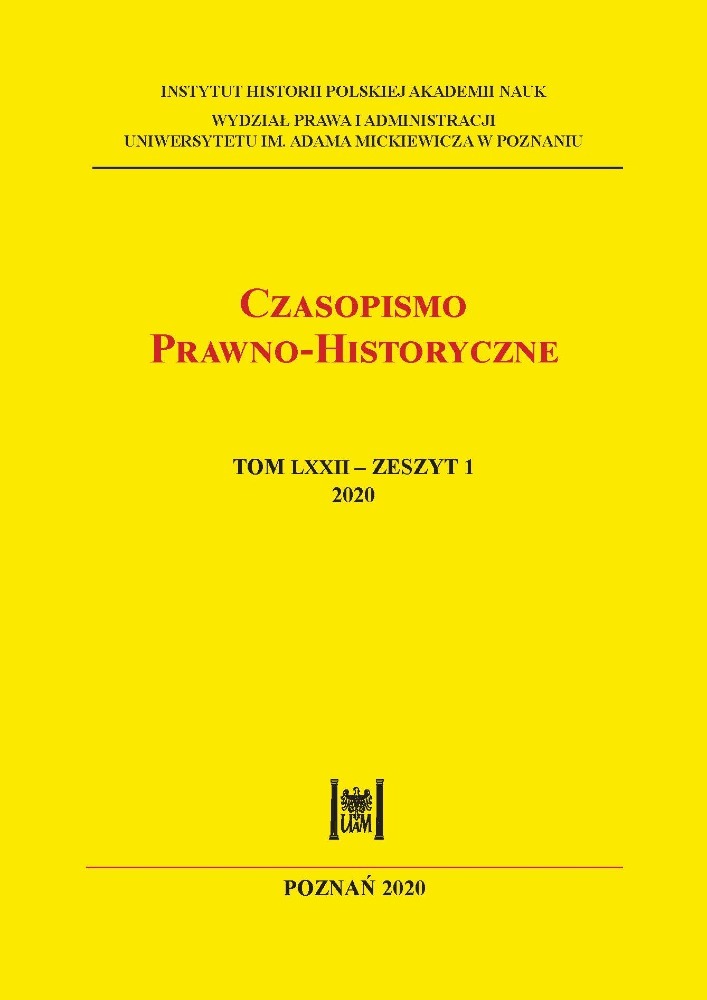Abstract
While Darius i (522–486 BC) of the Achaemenid dynasty did not introduce a universal royal law in Persia, he used an Old Persian term dāta-, “law,” in his inscriptions. In the local context, in Persepolis and Fārs, this term had two different meanings: 1) an ideological concept related to the obligations of the subjects and countries of the empire towards their king, and 2) a term used for regulations of the exchange of commodities in the Persepolis economy. In the royal inscriptions, the term dāta- represents the loyalty of the subjected countries and the tribute they owe to the king. This law held the subjected countries stable. As such, this term is related to the concepts of the Truth and Lie in the royal inscriptions, and virtually identical with term ṛštā-, “righteousness.” According to the Achaemenid ideology, the loyal countries and people were followers of the Truth and righteousness, but when they became disloyal, they became the followers of the Lie. In his inscriptions, Darius emphasizes that he was not disloyal, did not follow the Lie, but righteousness. Therefore, Darius and other Achaemenid kings were placing themselves as subjects to the same laws. In the Persepolis Fortification Archive, a collection of the administrative documents from the reign of Darius I, there is an Elamite term datam (a rendition of Old Persian dāta-). It occurs only in several texts related to the exchange of the commodities for šaumarraš, i.e., bars of silver. This exchange was done “according to the former regulations (datam)” (alternatively, “former decrees”). This suggests that in Persepolis, the exchange rates, as the rest of the economy, were controlled by the state. This use of the term dāta- is then much closer to the modern meaning of the term “law.”
References
Bartholomae C, Altiranisches Wörterbuch, Strassburg 1904.
Briant P., From Cyrus to Alexander: A History of the Persian Empire, Winona Lake 2002.
Briant P., Henkelman W.F.M., Stolper M.W. (red.), L’archive des fortifications de Persépolis: état des questions et perspectives de recherches, Persika, Paris 2008.
Brosius M., Reconstructing an Archive: Account and Journal Texts from Persepolis [w:] M. Brosius (red.), Ancient Archives and Archival Traditions: Concepts of Record-Keeping in the Ancient World, Oxford 2003.
Roth M.T. (red.), The Assyrian Dictionary of the Oriental Institute of the University of Chicago (CAD), vol. 15 S, 1984.
Fisher M.T., Stolper M.W., Achaemenid Elamite Administrative Tablets, 3: Fragments from Old Kandahar, Afghanistan, „Arta” 2015, nr 001.
Hallock R.T., Persepolis Fortification Tablets, Oriental Institute Publications, Chicago 1969.
Henkelman W.F.M., Imperial Signature and Imperial Paradigm. Achaemenid Administrative Structure and System across and beyond the Iranian Plateau [w:] B. Jacobs, W.F.M. Henkelman, M.W. Stolper (red.), Die Verwaltung im Achämenidenreich: Imperiale Muster und Strukturen. Administration in the Achaemenid Empire: Tracing the Imperial Signature, Wiesbaden 2017.
Herrenschmidt C., Aspects universalistes de la religion et de l'idéologie de Darius Ier [w:] G. Gnoli, L. Lanciotti (red.), Orientalia Iosephi Tucci memoriae dicata, Roma 1987.
Kawase T., Sheep and goats in the Persepolis Royal Economy, „Acta Sumerologica” 1980, nr 2.
Lincoln B., Religion, empire, and torture. The case of Achaemenian Persia, with a postscript on Abu Ghraib, Chicago 2007.
Oktor Skjærvø P., Avestan Quotations in Old Persian? Literary Sources of the Old Persian Inscriptions [w:] Sh. Shaked, A. Netzer, Irano-Judaica IV: Studies Relating to Jewish Contacts with Persian Culture throughout the Ages, Jerusalem 1999.
Olmstead A.T., History of the Persian Empire, Chicago 1959.
Persepolis Fortification Archive Project w środowisku OCHRE, ochre.uchicago.edu.
Schmitt R., Die altpersischen Inschriften der Achaimeniden, Wiesbaden 2009.
Schmitt R., The Bisitun inscriptions of Darius the Great: Old Persian Text, Corpus Inscriptionum Iranicarum, cz. I: Inscriptions of Ancient Iran, London 1991.
Schmitt R., The Old Persian inscriptions of Naqsh-i Rustam and Persepolis, Corpus Inscriptionum Iranicarum, cz. I: Inscriptions of Ancient Iran, London 2000.
Schmitt R., Wörterbuch der altpersischen Königsinschriften, Wiesbaden 2014.
Stolper M.W., Investigating Irregularities at Persepolis [w:] B. Jacobs, W.F.M. Henkelman, M.W. Stolper (red.), Die Verwaltung im Achämenidenreich: Imperiale Muster und Strukturen. Administration in the Achaemenid Empire: Tracing the Imperial Signature, Wiesbaden 2017.
Tamerus M., Elusive Silver in the Achaemenid Heartland: Thoughts on the Presence and Use of Silver According to the Persepolis Fortification and Treasure Archives [w:] K. Kleber, R. Pirngruber (red.), Silver, Money and Credit: A Tribute to Robartus J. van der Spek on the Occasion of his 65th Birthday, Leiden 2016.
Voigtlander E.N. von, The Bisitun Inscription of Darius the Great: Babylonian Version, Corpus Inscriptionum Iranicarum, cz. I: Inscriptions of Ancient Iran, London 1978.
License

This work is licensed under a Creative Commons Attribution-NonCommercial-NoDerivatives 4.0 International License.





